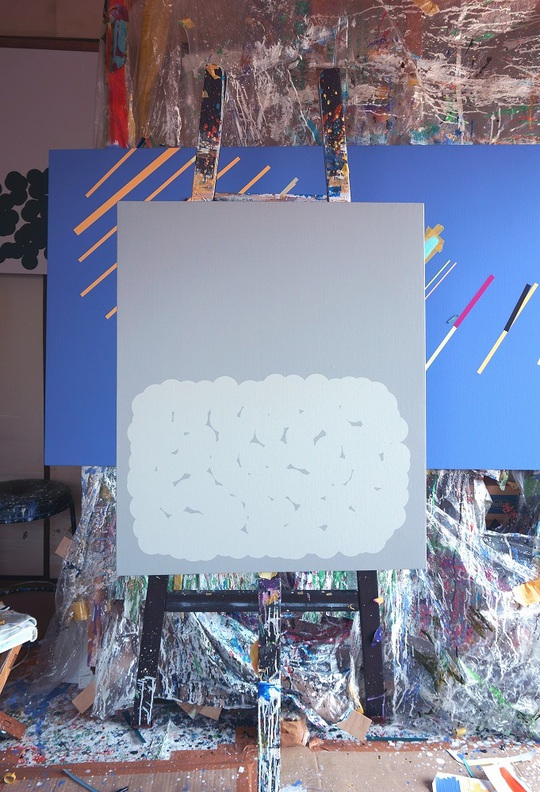Ryosuke Ogino(-ness)
11 May - 10 June 2018
Opening reception:Friday, May 11, 18:00 - 20:00
Maki Fine Arts is pleased to present -ness, a solo show by Ryosuke Ogino, starting Friday, May 11, 2018.
Born 1970 in Saitama, Japan, Ryosuke Ogino has been creating paintings on the subject matter of color and form using homogenous color layers. He graduated from the School of Political Science and Economy at Meiji University in 1993 and completed the B-semi Learning System program in 1998. Recent exhibitions include solo shows Hello (See Saw Gallery + Cafe, 2016) and kotenten (Switch Point, 2015) as well as the group show Present-Day Paintings: Two-Dimensional Works of Four Artists (Kawagoe City Art Museum, 2015). -ness is Ogino's first solo show at Maki Fine Arts.
-
The Sensation of Order
Takayuki Hayashi (art critic, associate professor at Tokyo University of the Arts)
These days, if the quality of a completed work is not a factor, no matter what one decides to draw, the work would be considered a painting, at least at that moment. As stated by Maurice Denis in 1890, we must always "remember that a painting, before being a battle horse, a female nude, or some sort of anecdote, is essentially a flat surface covered with colors assembled in a certain order."
To some extent, though, this notion puts the painter in a predicament. Denis's definition of a painting does not simply conclude that one must feel free to draw anything since color spots placed on a flat surface always results in a painting. If such a declaration is made that a painter can choose to draw whatever they wish, freedom becomes boundless, and the reason for painting something becomes lost. That is why, in his definition, Denis made sure to add the qualification "assembled in a certain order," most likely to avoid the neatness. Painters and interpreters of paintings who came after Denis have been eager to abandon order to newly establish what would be considered the reason. They remarked that paintings emerge from the composition of the external profile and support medium of the canvas, that they are visualizations of philosophy and mystery, or that they are rapid responses to a collection of social issues.
In contrast, Mr. Ogino makes no demand for reason and chooses to remain within the standards of order. What often amazes us standing in front of his paintings is that he takes Denis's imperative to draw anything at face value, then begins his process without bearing or seeking reason, and by the end achieves to spectacularly own the painting. When surveying Mr. Ogino's body of work, one will easily notice the concrete and the abstract, progressing from a depiction of a scale to the soft lines resembling calligraphy, from deep color layers to competing neon striations. And if we happen to be attentive, we would also realize within what he has produced one after the other, just enough frantic multiplicity, or perhaps a groundlessness, to give us jolt.
The uniqueness of Mr. Ogino's creations--the masterful removal of all trace of brushstrokes and the unusual method of naming his work by simply taking the dimensions of the canvas--quiets down the murmur and has the effect of bringing a certain pattern of consistency to his works. But we should keep in mind that, like a type of insurance, the calmness only comes at the very end. Order comes before that. The borders of his color layers are always clear cut, appearing not only as the standard for the borders but also as proof of division between the base and the diagram. In addition, the diagrams are placed on the canvas where the gaze naturally falls, toward the center or slightly below center, resulting in structurally stabilizing the work. Even the unanticipated shape of the canvas or the colored layers painted on the bars sticking out of the sides of the canvas often seem to be incorporated into the work by striking a balance with the other elements on the canvas. The somewhat high-handed sensation of order cloaks the endless freedom of the individual colors and forms. It appears we are powerless against these disquieting murmurs and cannot help but continue to listen.


Installation View

Installation View

Installation View

Installation View

Installation View

Installation View

Installation View

Installation View

Installation View

Installation View